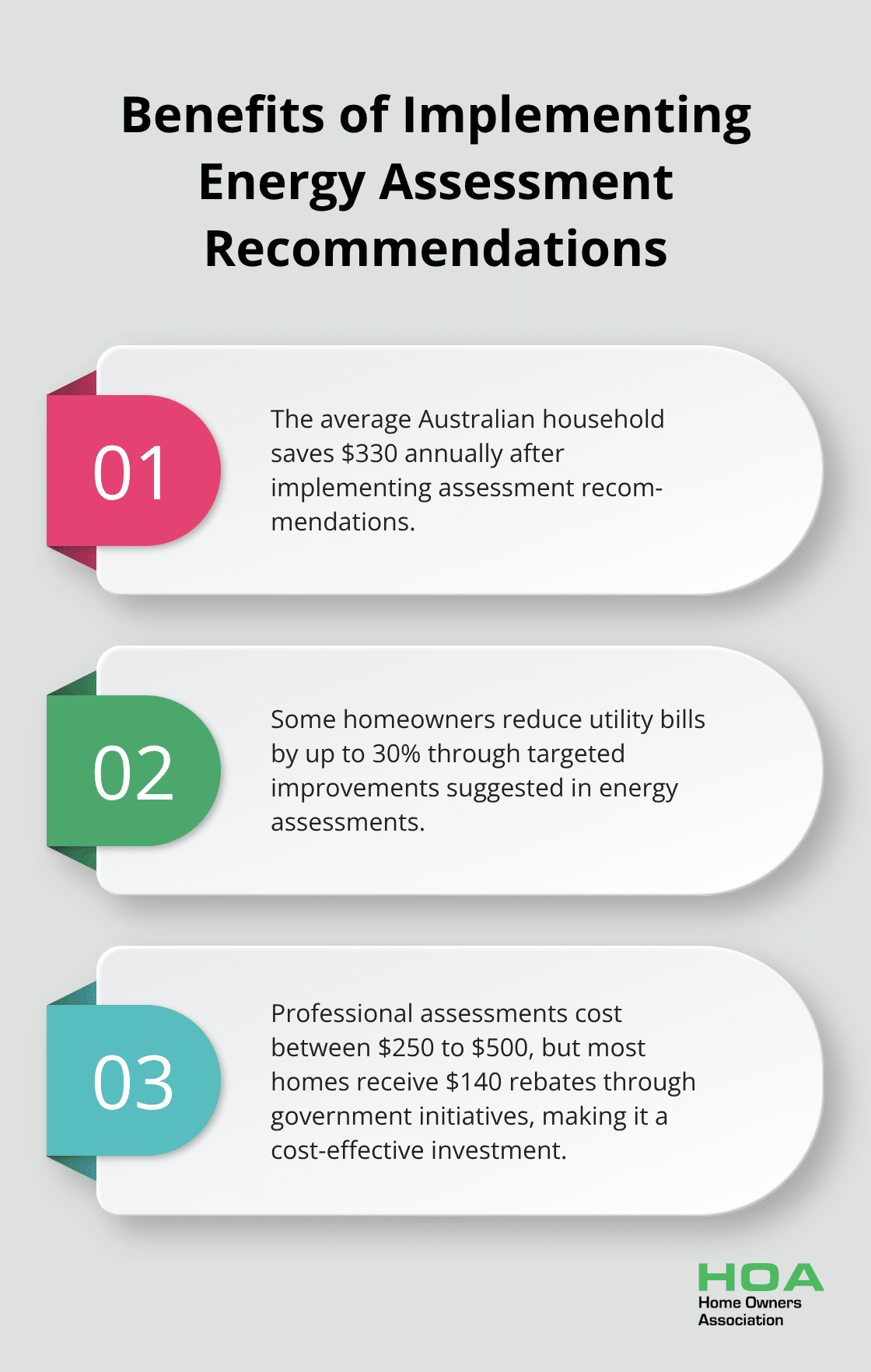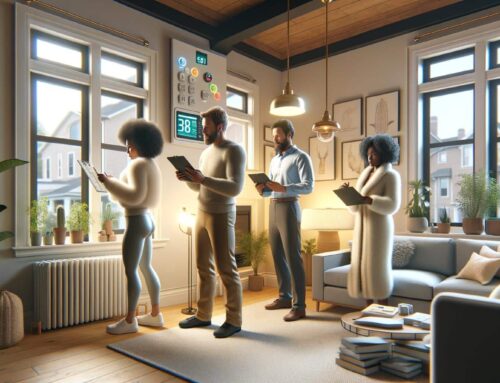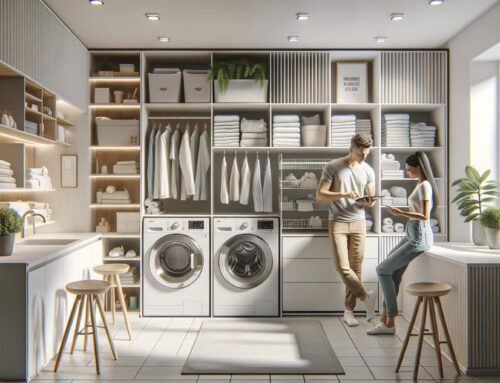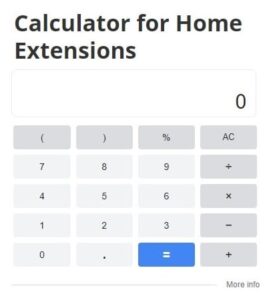
Your home could be wasting hundreds of dollars annually through energy inefficiencies you can’t see. A home energy assessment reveals exactly where your house loses energy and money.
We at Home Owners Association have helped thousands of homeowners cut their utility bills by up to 30% through proper energy evaluations. This guide shows you how to conduct both DIY and professional assessments.
What Exactly Is a Home Energy Assessment
A home energy assessment systematically evaluates where your house wastes energy and money. Professional assessors use specialised equipment like blower door tests and thermal imaging cameras to detect air leaks, inadequate insulation, and inefficient appliances. The U.S. Department of Energy reports that homes lose 10% to 20% of their energy annually through air leaks alone. Technicians measure your home’s airtightness, inspect insulation levels, and evaluate heating and cooling systems for peak performance during a typical assessment.
DIY Assessment Methods
You can start with a basic DIY assessment that uses simple tools like incense sticks to detect draughts around windows and doors. Check your electricity meter readings while you run individual appliances to identify energy-hungry devices. Calculate daily energy costs by multiplying an appliance’s wattage by hours used, then convert to kilowatt-hours (kWh). This method helps you spot obvious energy drains like old refrigerators or inefficient heating units that drive up monthly bills.
Professional Assessment Advantages
Professional assessments provide thermal imaging and blower door tests that reveal hidden problems invisible to the naked eye. These advanced methods detect air leaks in wall cavities, inadequate insulation behind drywall, and ductwork problems that DIY methods miss. Australian households can monitor their daily electricity consumption to understand their energy patterns and identify when professional evaluations might be beneficial. Professional assessors also measure exact R-values of insulation and test combustion appliance safety.
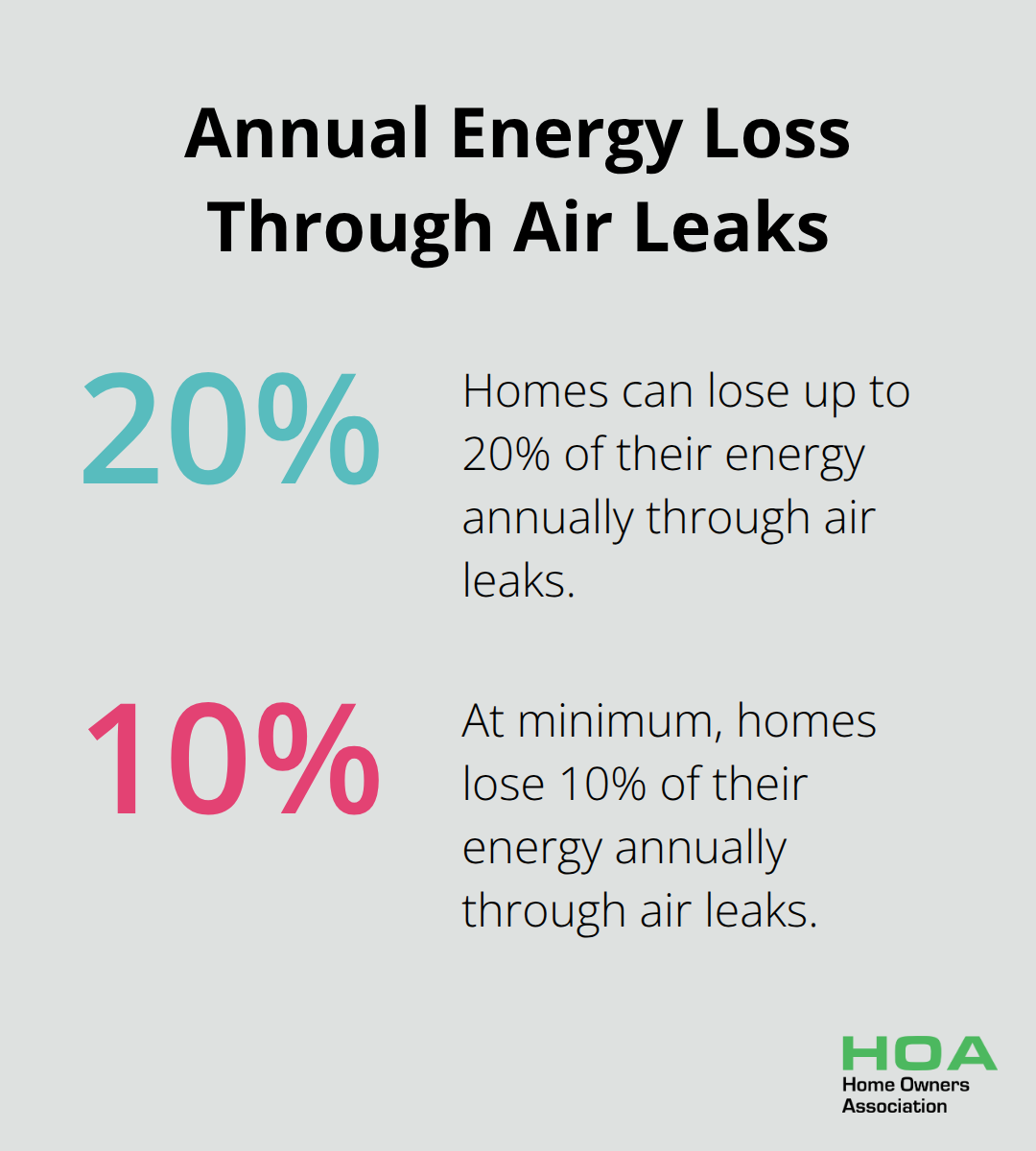
Optimal Assessment Schedule
Schedule assessments during extreme weather seasons when heating or cooling systems work hardest. Winter assessments reveal heat loss through poor insulation and air leaks, while summer evaluations expose cooling inefficiencies and ventilation problems. Properties built before 1990 need assessments every three years due to ageing building materials and deteriorating systems. New homeowners should conduct assessments within six months of purchase to establish baseline energy performance.
The next step involves gathering the right tools and preparing your home for a thorough DIY energy evaluation.
How Do You Check Your Home for Energy Waste
Walk through every room with a lit incense stick or tissue paper during windy conditions. Hold the flame near window frames, door edges, electrical outlets, and baseboards to detect air movement that indicates leaks. Focus on areas where different materials meet, such as where siding connects to the foundation or where pipes enter walls. Sealing these gaps can reduce energy bills through caulking and weatherstripping techniques that offer quick returns on investment, often one year or less. Check your attic hatch, recessed lighting fixtures, and areas around chimneys where warm air typically escapes.
Test Insulation Effectiveness
Press your hand against interior walls during cold weather to identify inadequately insulated areas that feel cold to touch. Measure attic insulation depth with a ruler – R-value measures insulation’s heat resistance, with R30 recommended for zone 1, R49 for zone 2, and R60 for zones 6 and 5 depending on climate zone. Remove electrical outlet covers on exterior walls to check for insulation behind them, but turn off power at the breaker first. Insufficient wall insulation accounts for up to 35% of heat loss in older homes. Inspect basement and crawl space walls for missing or compressed insulation that reduces thermal performance.
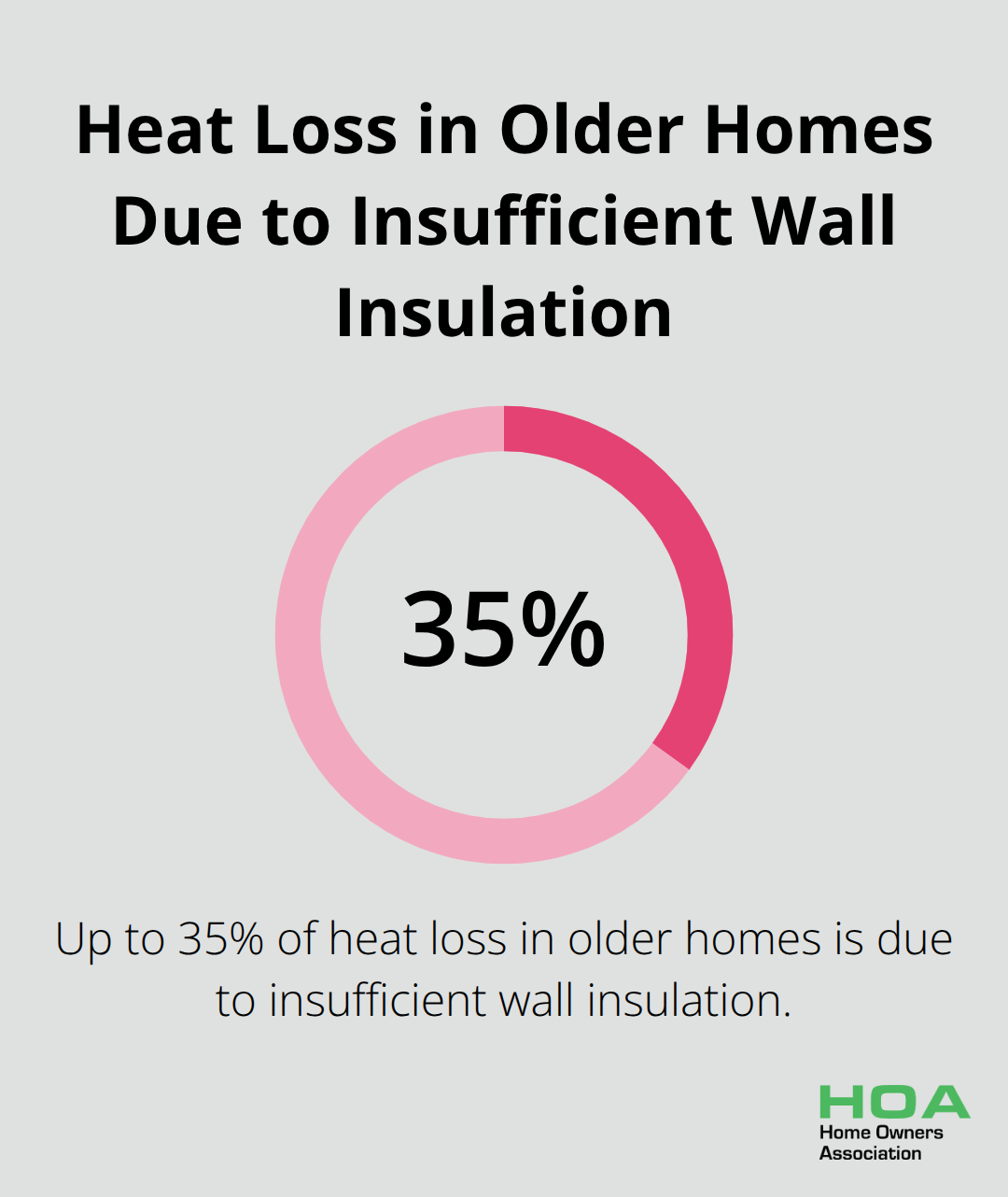
Evaluate HVAC System Performance
Change your furnace filter and examine its condition – dirty filters force systems to work 15% harder according to HVAC manufacturers. Test each room’s airflow by holding tissue paper near vents while the system runs. Uneven airflow indicates ductwork problems or blocked vents that waste energy. Check ductwork in unconditioned spaces like attics or basements for disconnected joints, holes, or missing insulation. Measure temperature differences between supply and return vents – gaps larger than 15 to 20 degrees suggest inefficient operation. Systems older than 10 years that show declining performance need professional maintenance.
Professional assessors use advanced equipment and techniques that reveal problems your DIY inspection cannot detect.
What Happens During a Professional Energy Assessment
Professional energy assessors arrive with specialised equipment including blower door fans, thermal imaging cameras, and combustible gas detectors that reveal hidden energy losses your DIY inspection missed. The assessment takes 3 to 4 hours for an average home, with assessors first reviewing your utility bills from the past 12 months to identify usage patterns and seasonal spikes. They conduct blower door tests that depressurise your home to 50 pascals (equivalent to a 20 mph wind hitting all sides simultaneously), then measure air leakage rates in cubic feet per minute. Thermal imaging cameras detect temperature differences as small as 0.1 degrees Celsius, revealing inadequate insulation behind walls, air leaks around windows, and thermal bridging through structural elements.
Advanced Testing Equipment and Methods
Assessors use duct blasters to test HVAC system efficiency by measuring air leakage in ductwork under pressure conditions. They insert digital manometers into ducts to measure static pressure and airflow rates, identifying restrictions that force systems to work harder. Combustion analysers test gas appliances for carbon monoxide levels and draught efficiency, while digital hygrometers measure humidity levels that affect comfort and energy consumption. Professional assessments cost between $250 to $500 according to Victorian energy programs, but most homes receive $140 rebates through government initiatives. Infrared thermometers measure surface temperatures on walls, ceilings, and floors to pinpoint insulation gaps that waste energy during heating and cooling seasons.
Understanding Your Energy Assessment Report
Your report includes specific recommendations ranked by cost-effectiveness and potential energy savings, with payback periods calculated for each improvement. Look for air sealing recommendations first since they typically offer the fastest returns, often paying for themselves within 12 months through reduced utility bills. The report quantifies current insulation R-values compared to recommended levels for your climate zone, showing exactly where additional insulation provides the greatest impact. Priority ratings help you focus on improvements that save the most energy per dollar invested, with heating and cooling system upgrades often showing 20 to 50 per cent efficiency gains when replacing units over 15 years old.
Final Thoughts
Regular home energy assessments transform your property into an efficient, cost-saving investment that pays dividends for decades. The average Australian household saves $330 annually after they implement assessment recommendations, with some homeowners who reduce utility bills by up to 30% through targeted improvements. Your next step involves priorities based on payback periods and available budget.
Start with air sealing projects that typically recover costs within 12 months, then move to insulation upgrades and HVAC system improvements. The Victorian Energy Upgrades program offers rebates up to $140 for professional assessments (making this investment even more attractive). Long-term energy savings compound over time as efficient homes maintain their performance for 15 to 20 years with proper maintenance.
Properties with documented energy efficiency improvements also command higher resale values in today’s market. We at Home Owners Association provide expert guidance on energy-efficient materials and systems for Melbourne homeowners. Schedule your home energy assessment during peak heating or cooling seasons when problems become most apparent.
